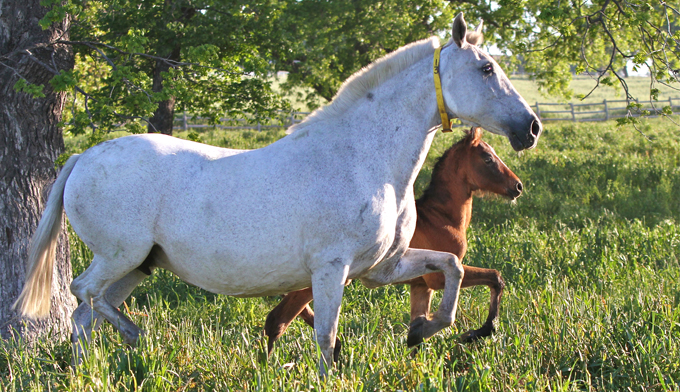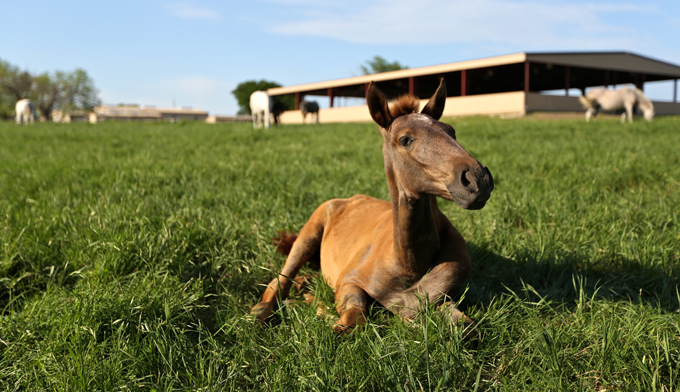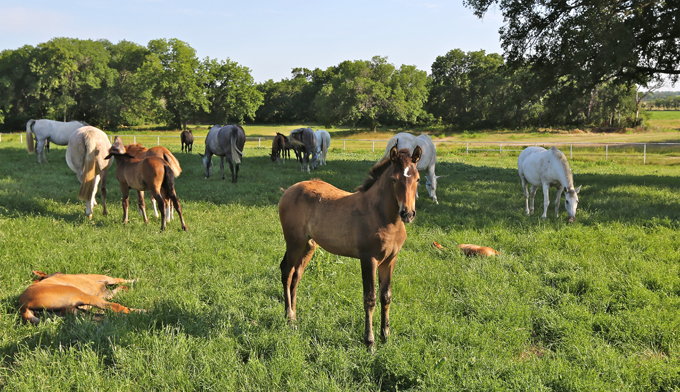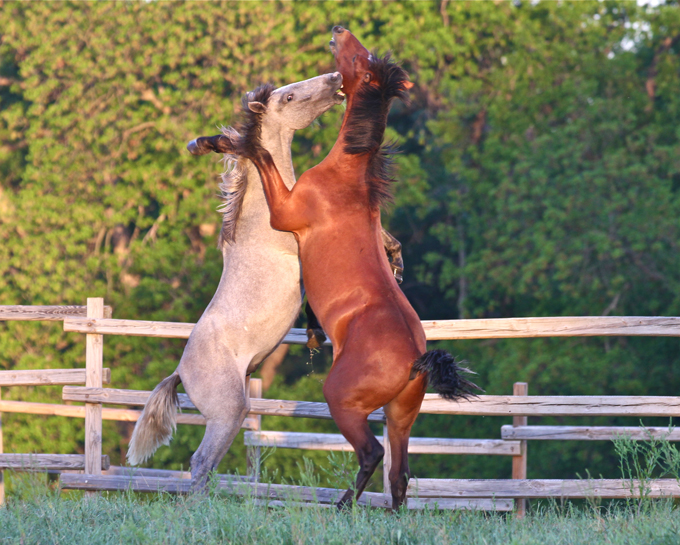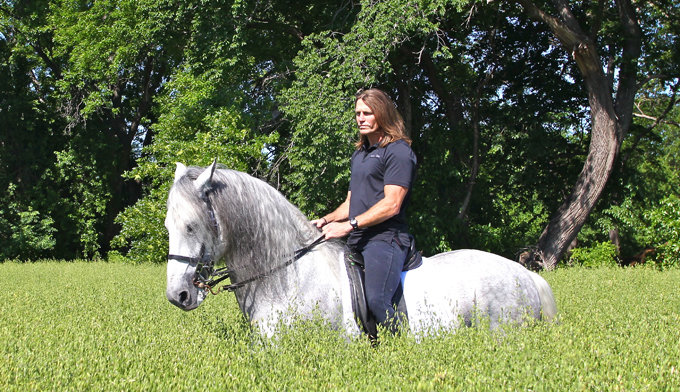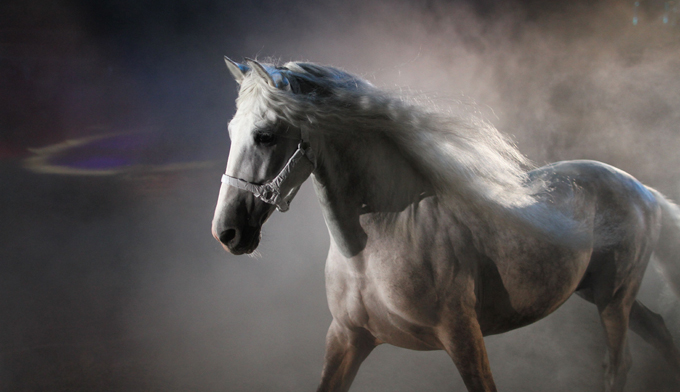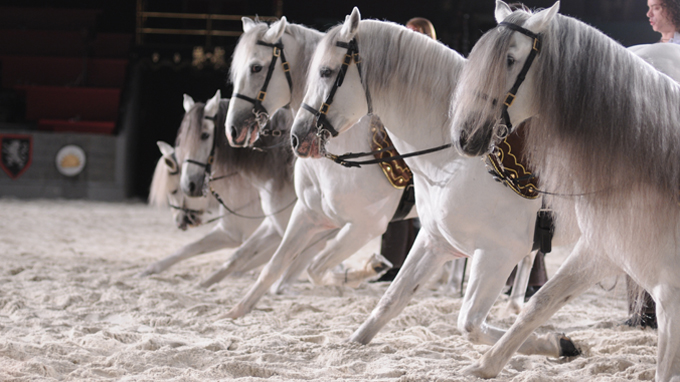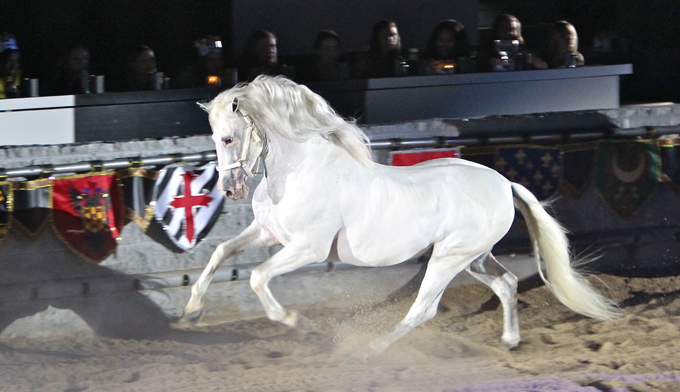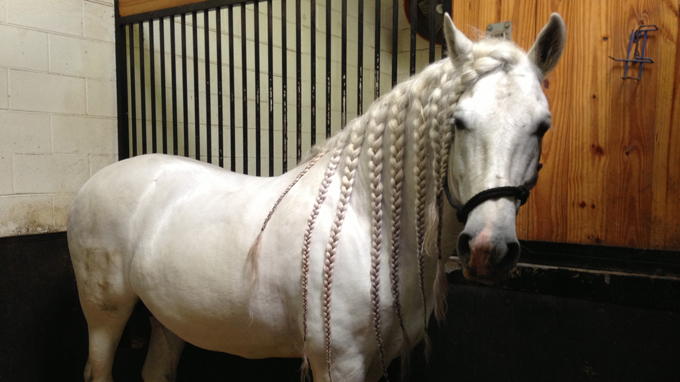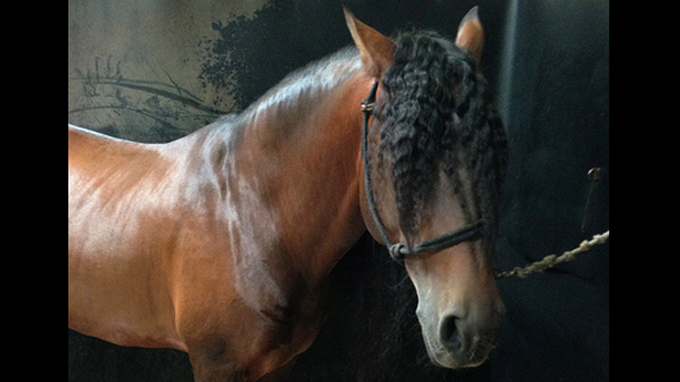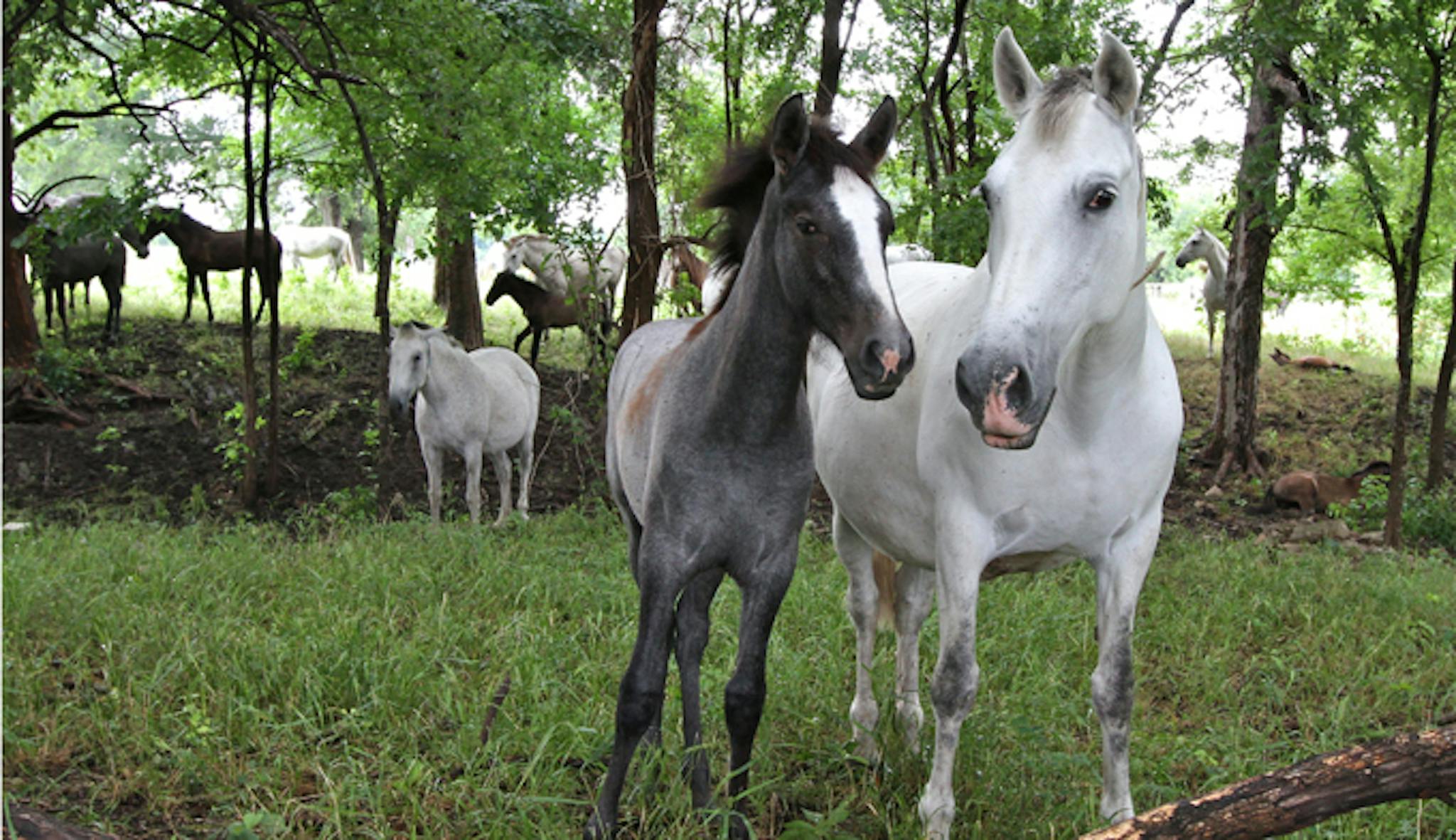
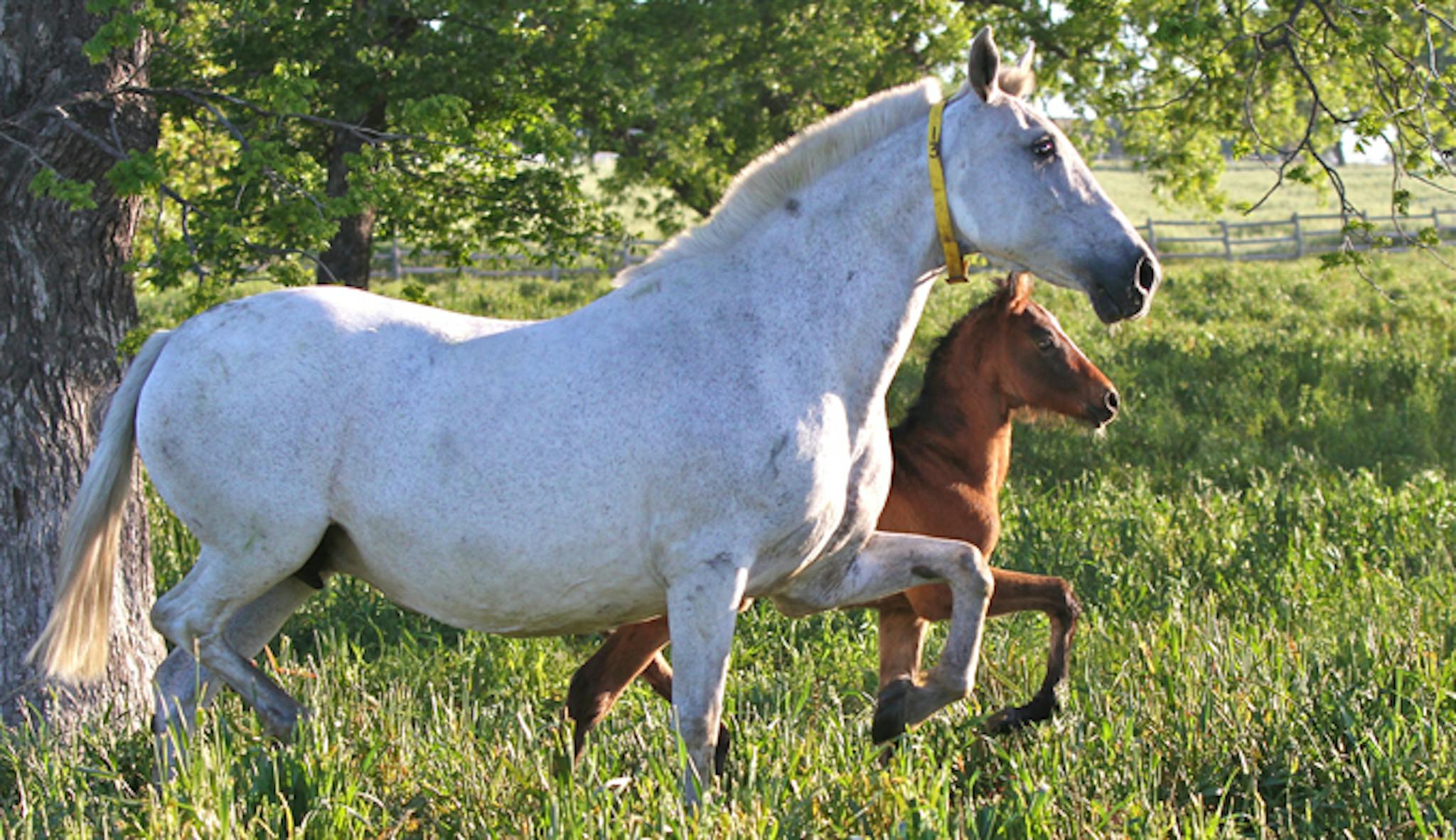
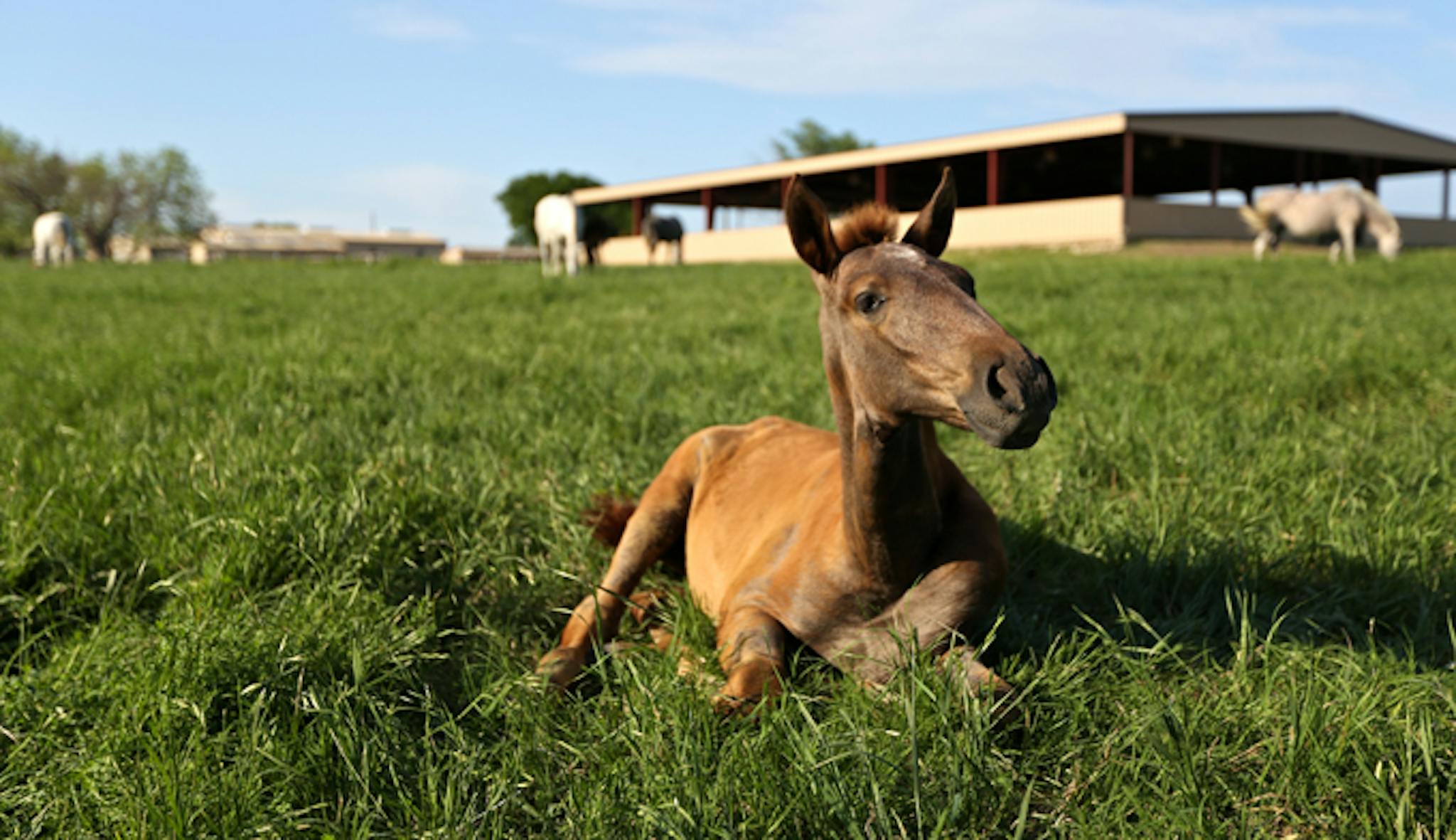


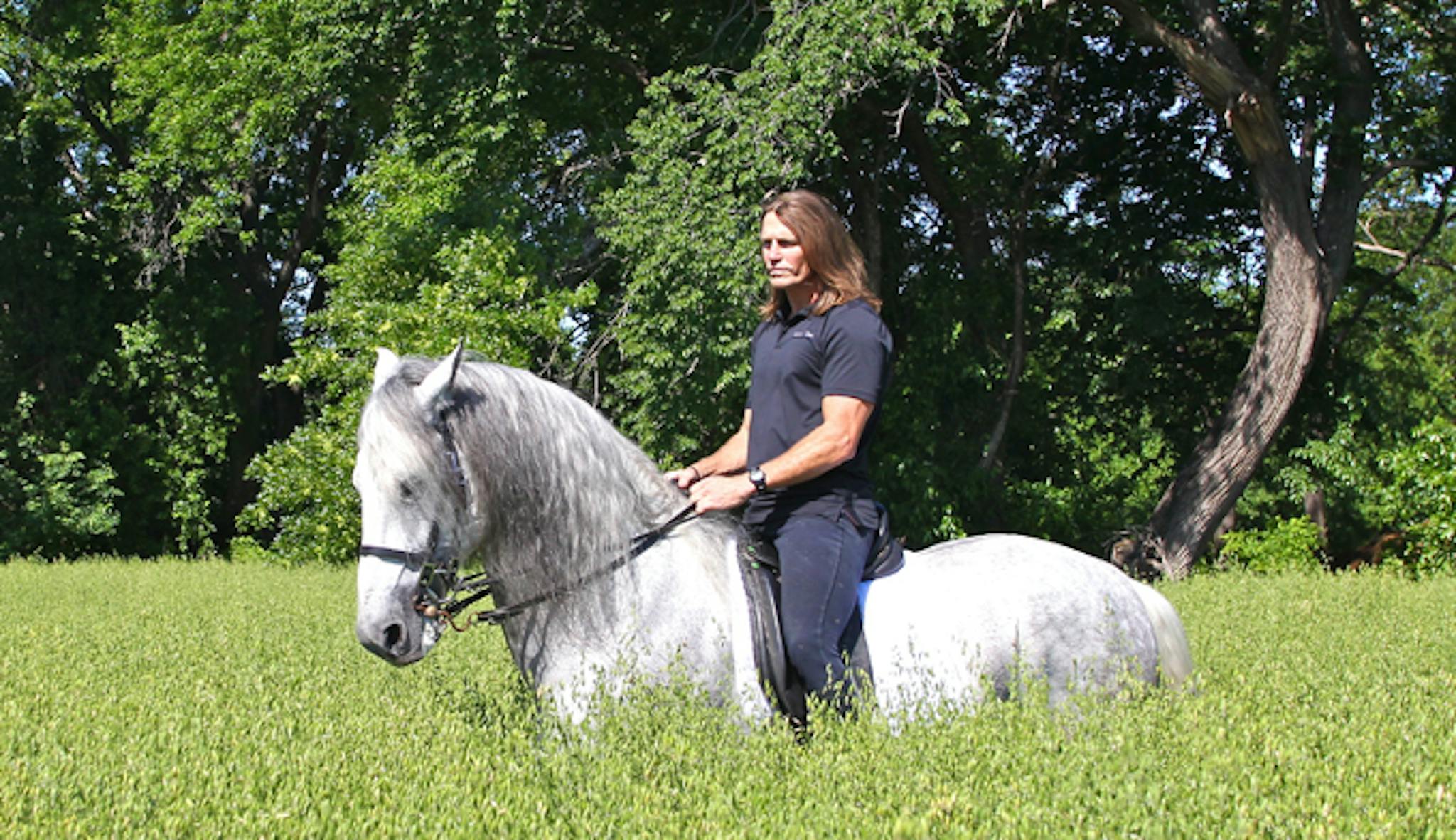
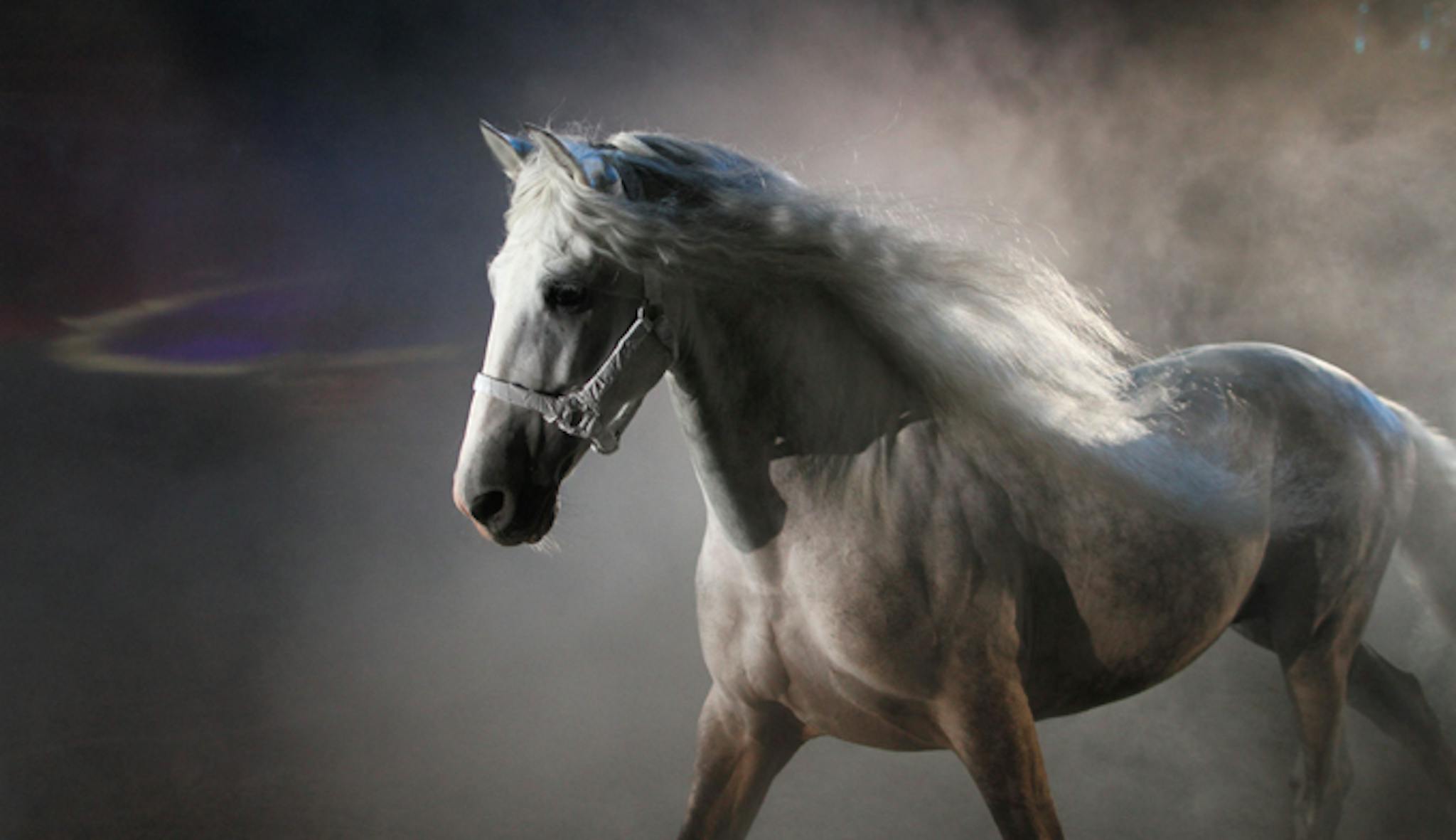
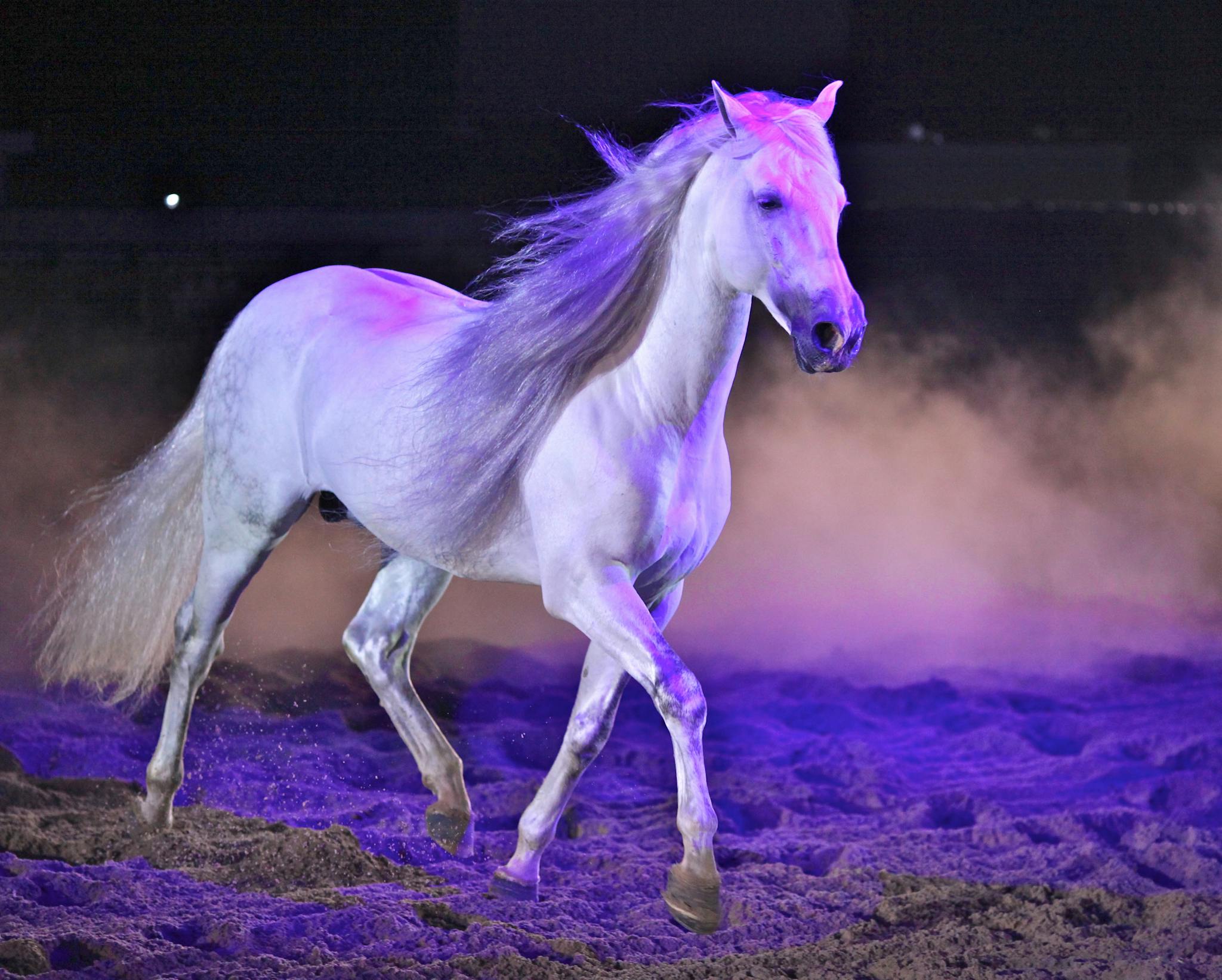
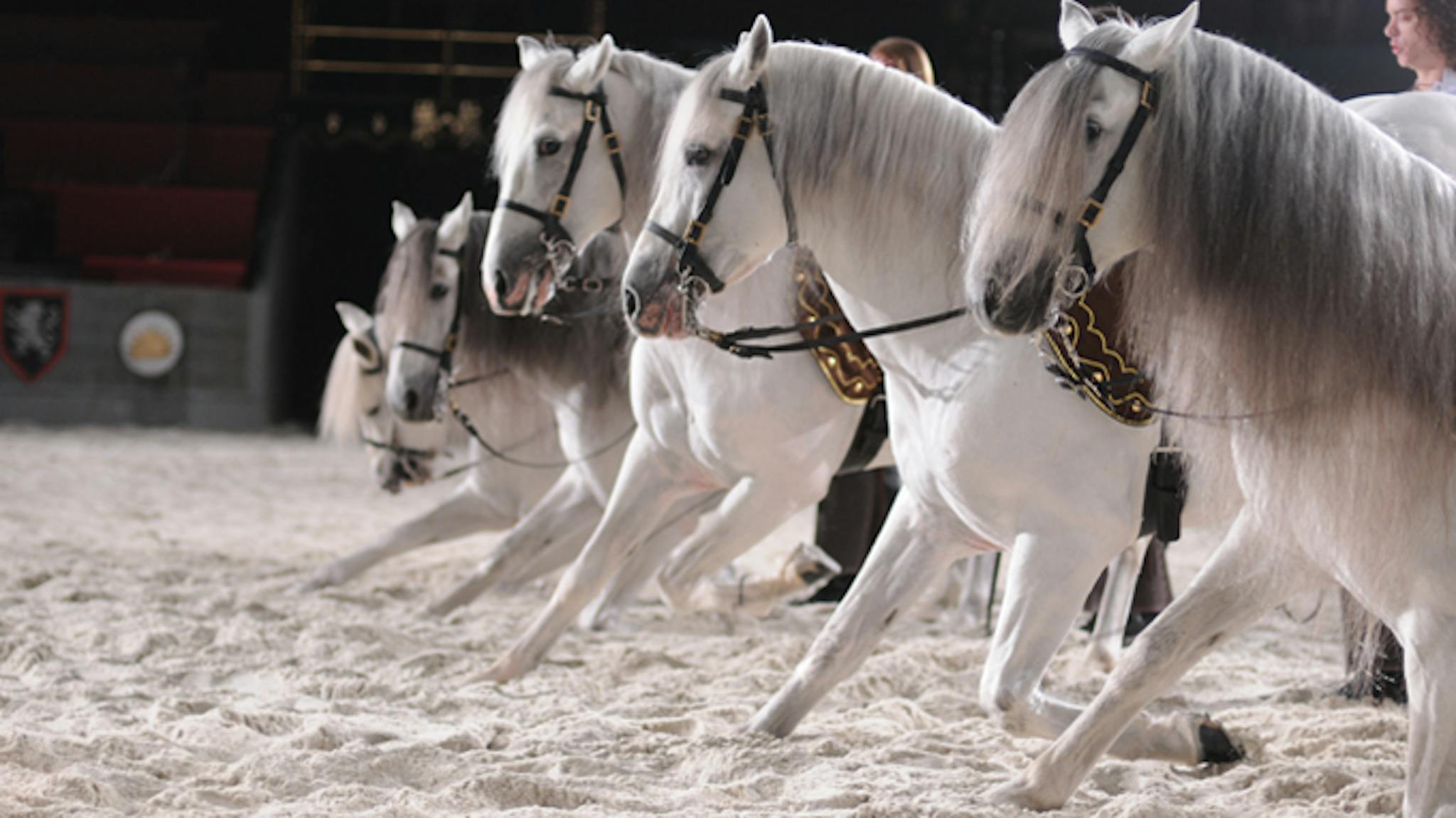
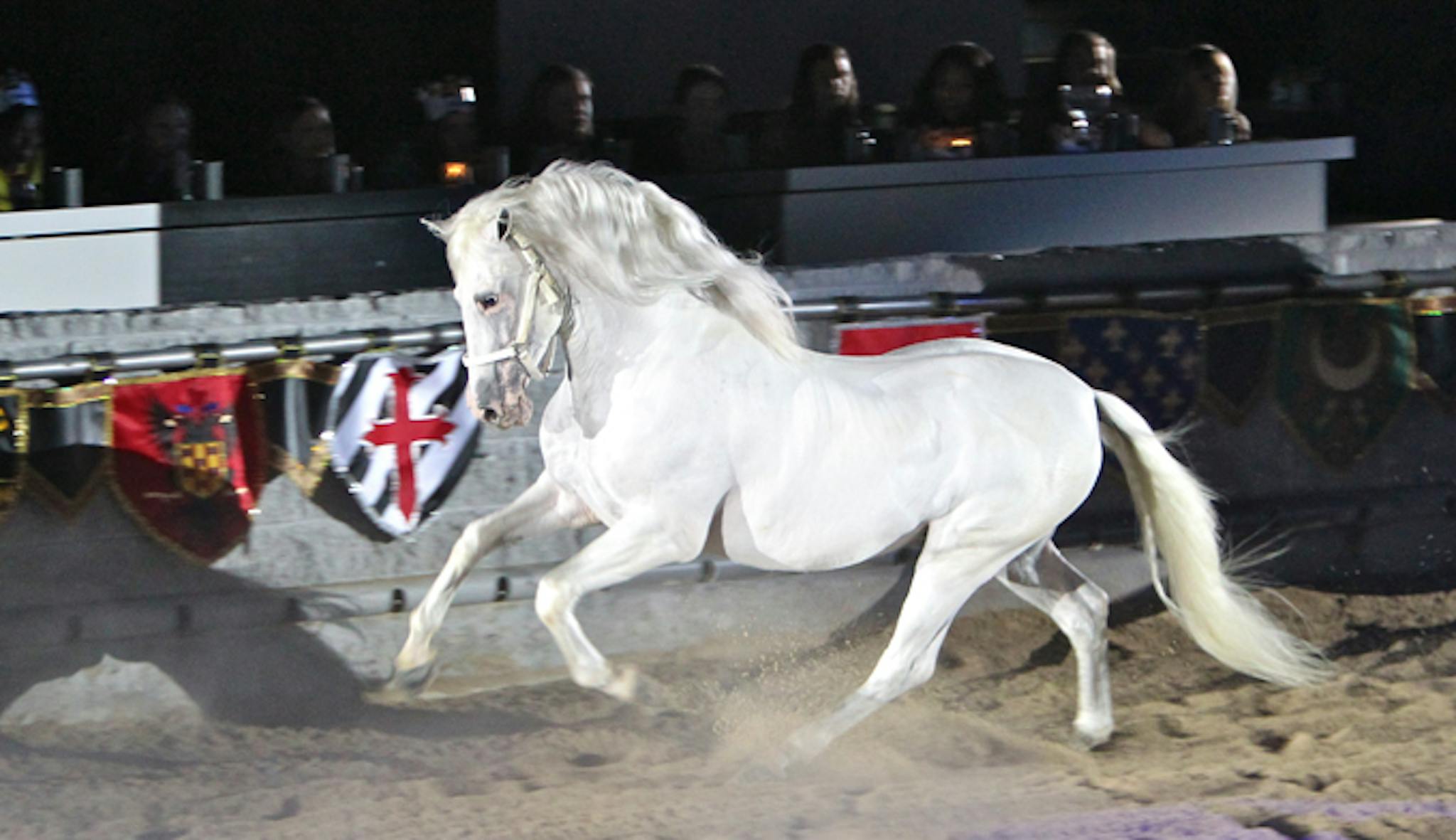
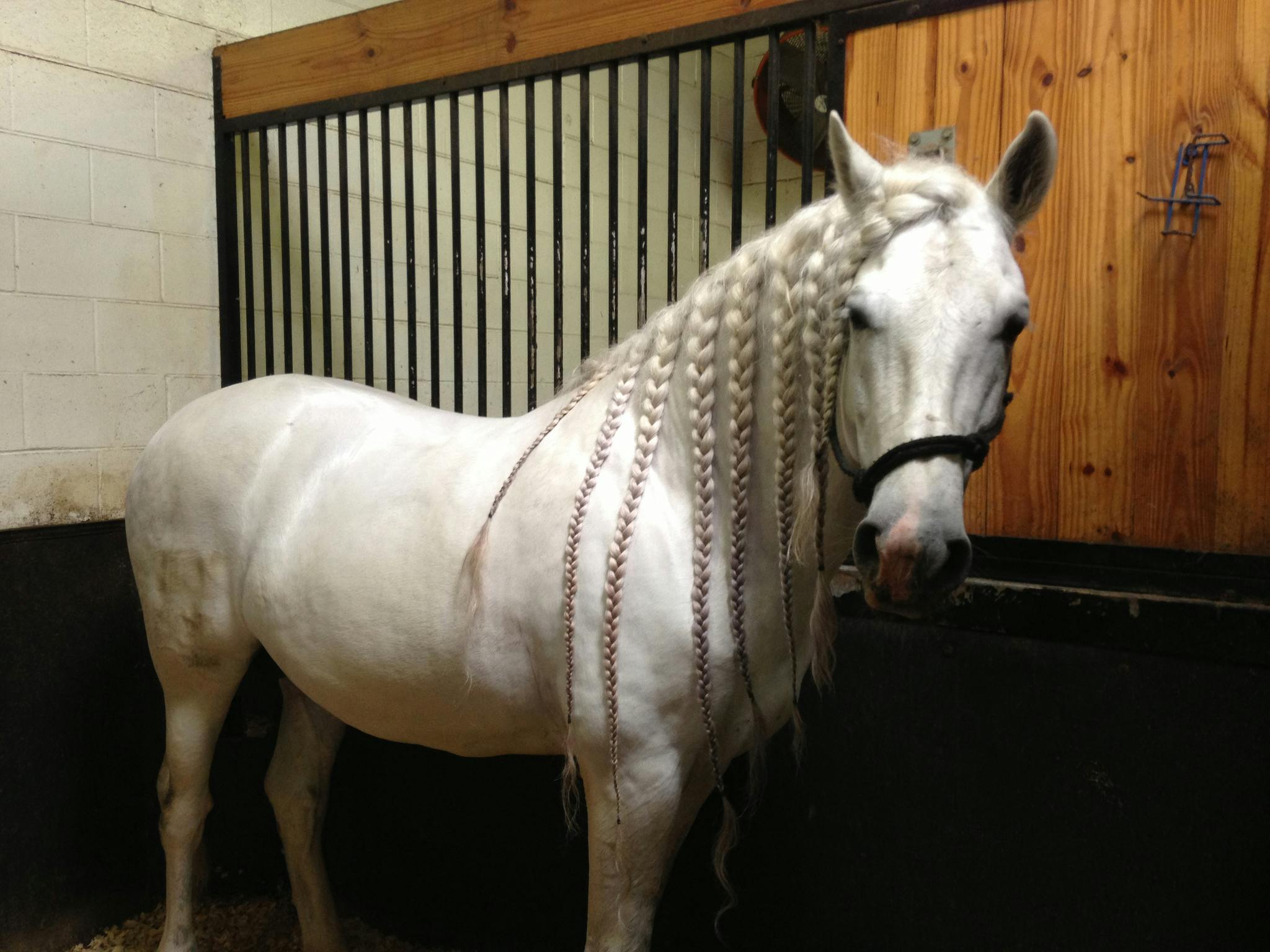
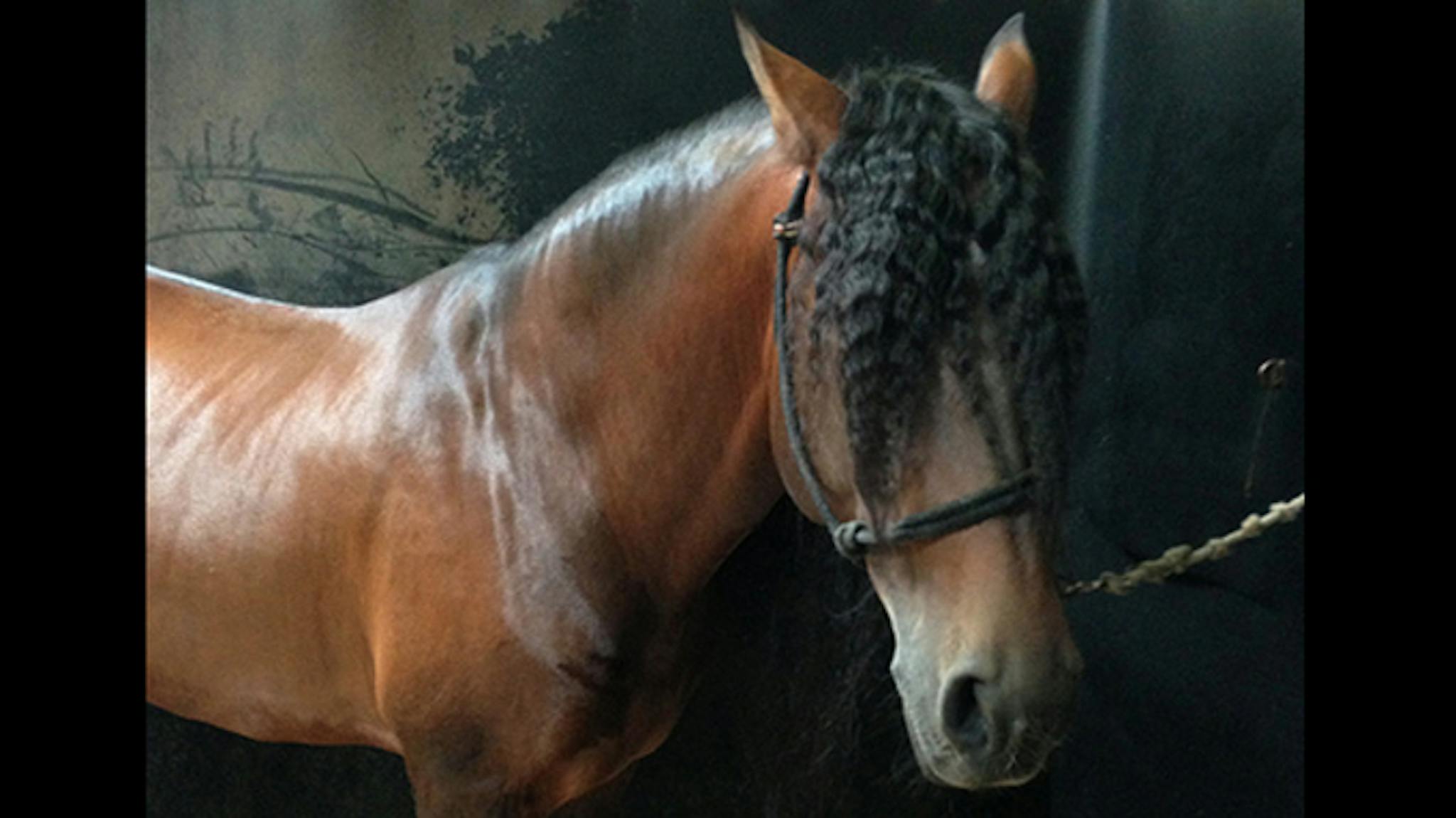
Victor De Lara awoke early one morning not long ago to the sight of forty white horses staring through his bedroom window. It was surreal, even for a man who has made a living with a company whose specialty is spectacle.
De Lara, who is mustachioed and wears his shirts unbuttoned to a daring degree, is the longest-serving knight at Medieval Times Dinner and Tournament, a dinner theater performance that features sword-fighting knights competing for the hand of a princess. He was in armor for 26 years, joining the company in 1980 at its first location in Majorca, Spain, then moving with it to Florida to help open the first American castle in 1983.
In 2007, he was finally put to pasture, so to speak, when he was named the director of equestrian development and charged with bolstering the horse breeding program at the Medieval Times ranch in Sanger, Texas, where he now lives with more than one hundred Andalusian horses, some of which occasionally escape their pen.
Since De Lara’s arrival at the discreet 241-acre Chapel Creek Ranch, it is believed to be the largest breeder of Andalusians, also known as Pure Spanish Horses, in the country, according to the Pura Raza Española Mundial Registry, one of the main associations in the United States that certifies the breed’s bloodline.
More than 440 foals have been born there since 1992 (the ranch was acquired the year before). A healthy purebred is worth around $40,000 at birth, De Lara estimated, and its value can increase to more than $100,000 after it receives years of dressage training.
First unified as a breed in the sixteenth century by King Felipe II of Spain, Andalusian horses are known for their elevation, intelligence, and long, flowing manes. They are beloved by Spanish royalty, Spanish monks (who are said to have saved them from extinction in the twelfth century), and the Spanish military (which took over the official studbooks in 1905 before handing them over to the Ministry of Agriculture in 2006).
In America, Andalusians are apparently loved most by the Medieval Times shareholders, many of whom are of Spanish heritage and have enthusiastically invested in the breeding program to supply expensive purebred horses for their campy castles.
“Ultimately, the goal is to have all the horses be Andalusians,” Jon Speier, the senior vice president and general manager of the Dallas castle, said. (Currently the Andalusians are used for the procession and dressage portions of the show, and quarter horses are used in the sword battles.)
“They go from artificial insemination to being born to enjoying the pastures and the oats and having fun here to suddenly performing before thousands of people,” Speier said.
Through the end of May, Medieval Times has entertained almost 54 million guests—more than five million at the 1,000-seat Dallas castle, which opened in 1992. The Dallas castle, like each of the company’s nine North American castles, has its own horse trainer. Teaching the horses the show’s choreography takes up to three years. Once the rigorous training is complete, De Lara said, “the horse sees the smoke and lights and hears the music, and he knows what to do.”
The horses are so well trained, in fact, that equine skills are not considered a hiring advantage in prospective knights. “Some folks will come and say, ‘I’ve been riding horses since I was ten, and I want to work for you,’ and we kind of shy away from that a little bit,” Speier said. “We want you to learn the horses our way. To be a knight, you’ve got to surrender yourself and follow the choreography of what we do.”
This year’s class of soon-to-be-dancing foals was robust: 22 were born between January and May, all given names starting with L. The males will spend the next three years on the ranch eating oats and Bermuda hay. Many will lose their colored baby hair and become the silken white—or technically, gray—horses that pesade and piaffe in the sand of the Medieval Times castles around the country, where they serve up to seventeen years.
At the age of three, the horses are put up for “revision,” the process by which their movement, height, proportions and other characteristics, are assessed and approved for the Pure Spanish Horse studbooks. (The negative space between their legs and belly must make a square; mares must exceed 1.5 meters tall, stallions 1.52 meters, and so on.)
What do they win if they pass their exams? The right to breed, in theory. They are denied the actual act, and only five select stallions sire all of the foals. The best mares stay on the ranch and enter the breeding program; except for nine days a year, the thirty mares on the ranch are always pregnant. One mare, recently sold, had babies from the time she was three until she turned 21.
But the Andalusians, according to De Lara, love “their work,” and they appear to be treated well. On a recent visit to the stables at the Dallas castle, they had more elaborate hairdos than the princesses. Bathed daily with Mane and Tail shampoo, one young Andalusian peered out from under crimped brown bangs, while a majestic white stallion was decked out in what might be called the Medusa—a series of long, serpentine braids. Shiny and docile, they were horses fit for kings.

